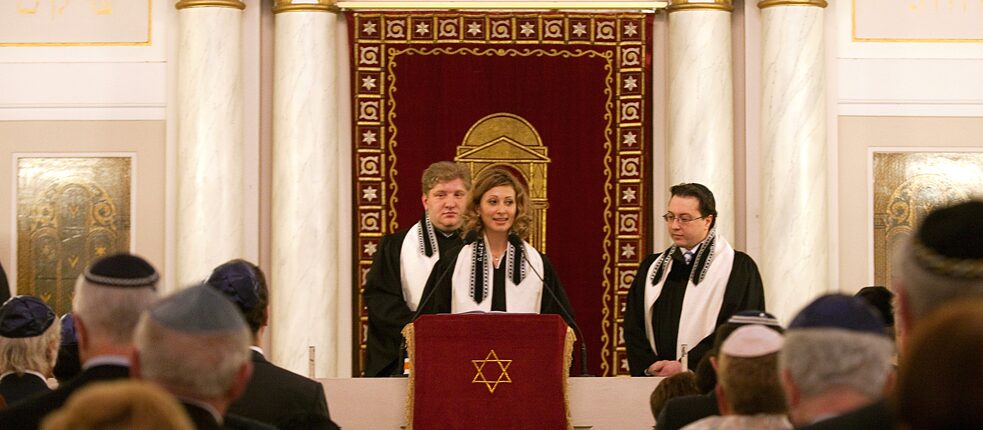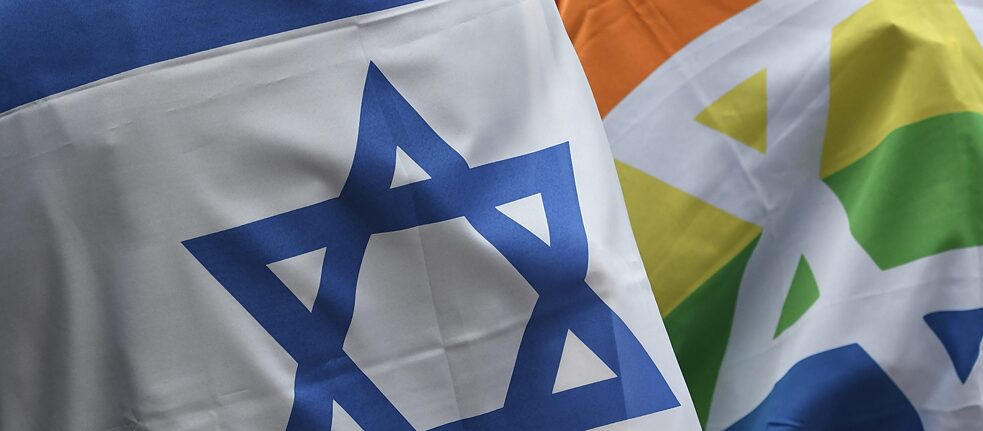An old new home
Jewish Life In Germany

After the Second World War it was thought that there would never again be any Jewish life in Germany. Today, however, there are female Rabbis in this country, Jewish LGBTQI groups, Jewish politicians – but despite all that – the problems with anti-Semitism have still not gone away.
By Ralf Balke
Nothing is more permanent than a temporary solution. The history of the Jewish community in post-war Germany seems to confirm this old adage. After the Shoah, it was almost inconceivable that Jews could ever find a home again in the country of their persecutors. Therefore, after 1945 every form of Jewish existence on German soil was viewed as a temporary matter and the focus was on “liquidation communities” whose task it was to support and motivate members to move to another country. More than 75 years later, things are looking very different. Jews in Germany have long since ceased to sit on “packed suitcases” waiting to leave. There are currently 105 Jewish communities with almost 98,000 members, which the Zentralrat der Juden in Deutschland (Central Council of Jews in Germany) unites under its roof as a lobby group. Furthermore, there are probably as many Jews again who do not belong to any community.
With this unified community, a concept has proven itself that has only been able to develop in this form in German-speaking countries. It embraces all currents of Judaism on an equal footing, but religious life largely follows orthodox guidelines. There are historical reasons for this. Up until the end of the 1980s, there were just 28,000 Jews in the old Federal Republic of West Germany. The vast majority were so-called displaced persons (DPs), i.e. Jews and their descendants who had fled from Poland, Romania or Hungary after 1945. Most of them were simply closer to orthodox Jewish traditions. In the GDR (the old East Germany) the situation was completely different. Most of the few Jews who had moved there, mainly for ideological reasons, fled to the West due to the repressive regime, so that in 1989 the communities there had just 1,500 members.
A new diversity
After the fall of the Wall, the immigration of Jews from the collapsing Soviet Union began. Around 220,000 people had arrived as quota refugees by 2005 and they not only ensured a renaissance of Jewish life, but also brought about a previously unknown diversity. In this way, parallel to Orthodox Judaism, other currents were able to establish themselves – some liberal, some conservative and some progressive. The Abraham Geiger College in Potsdam, founded in 1999, was the first rabbinical seminary of the post-war period. They started to ordain rabbis there in 2006, including the first female rabbi in 2010. In 2009, the Orthodox Hildesheim Rabbinical Seminar followed in Berlin, so that unlike in the past, communities in many places are now looked after by rabbis who completed their training in Germany.
 Jewish LGBTQI groups want to make queer life in the communities more visible: kippa day in the city of Freiburg.
| Photo (detail): © picture alliance/ Winfried Rothermel
Against this background, Jewish life has clearly subdivided itself over the past three decades. Not just due to the fact that the communities as such have become more “Russian” – the immigrants from the former Soviet Union already form the absolute majority in purely quantitative terms. In the meantime, a new generation has grown up that only knows the Soviet Union from childhood or was actually born in Germany. Young Jews, in particular, no longer want to be identified with the Shoah, anti-Semitism or the Middle East conflict, but want to break with national or religious stereotypes. Examples of this include Keshet, an LGBTQI group that wants to make queer life in the communities more visible, or the Jewish Student Union (JSUD). Jews are also flying the flag on the party political level – for example, groups of Jewish party members have formed in the CDU and SPD parties.
Jewish LGBTQI groups want to make queer life in the communities more visible: kippa day in the city of Freiburg.
| Photo (detail): © picture alliance/ Winfried Rothermel
Against this background, Jewish life has clearly subdivided itself over the past three decades. Not just due to the fact that the communities as such have become more “Russian” – the immigrants from the former Soviet Union already form the absolute majority in purely quantitative terms. In the meantime, a new generation has grown up that only knows the Soviet Union from childhood or was actually born in Germany. Young Jews, in particular, no longer want to be identified with the Shoah, anti-Semitism or the Middle East conflict, but want to break with national or religious stereotypes. Examples of this include Keshet, an LGBTQI group that wants to make queer life in the communities more visible, or the Jewish Student Union (JSUD). Jews are also flying the flag on the party political level – for example, groups of Jewish party members have formed in the CDU and SPD parties.
“Meet A Jew” and a Jewish-Muslim dialogue
For its part, the Central Council of Jews has also launched numerous initiatives to make Jewish life more visible. Starting with “Meet A Jew”, an encounter programme in which young Jews hold lectures and discussions about Judaism and everyday Jewish life in schools or sports clubs, to “Shalom Aleikum”, a Jewish-Muslim dialogue project in which people of all ages and professional groups come together in order to get to know each other better and to break down prejudices – after all, there are still quite a lot of hostile attitudes towards Jews and anti-Semitism continues to pose a great danger.
Even this threat, however, has changed in some respects over the years. The notorious agitation against Jews from the right-wing political spectrum has recently been joined by new expressions of hatred from the radical left milieu, not to mention an ever-growing form of anti-Semitism that has its roots in political Islam. The police registered 2,275 anti-Jewish crimes in 2020, the highest figure since the introduction of the “Politically Motivated Crime” (PMK) tracking system in 2001. Synagogues and other Jewish institutions are under police protection around the clock – that is also part of the normality of Jewish life in Germany.
 Flowers in front of the synagogue in Halle to commemorate the victims of the 2019 anti-Semitic attack.
| Photo (detail): ©picture alliance/dpa/dpa-Zentralbild/Hendrik Schmidt
Flowers in front of the synagogue in Halle to commemorate the victims of the 2019 anti-Semitic attack.
| Photo (detail): ©picture alliance/dpa/dpa-Zentralbild/Hendrik Schmidt